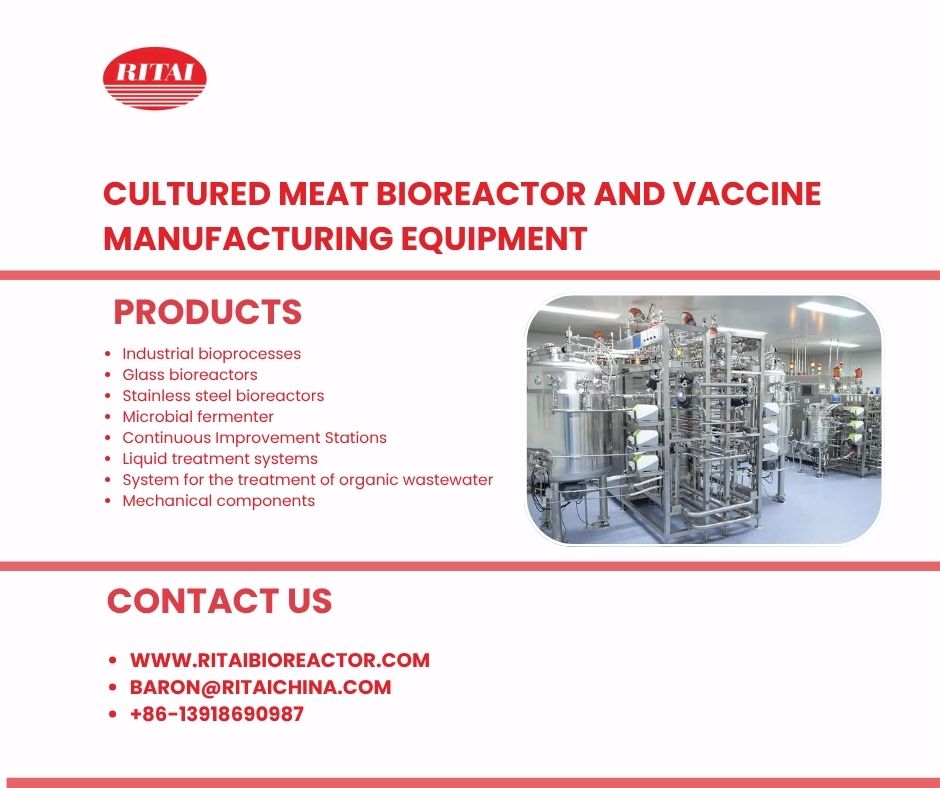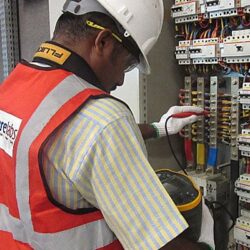
The Rise of Cultured Meat Bioreactors
The world is witnessing a transformative shift in how we produce food, and cultured meat bioreactors are at the heart of this revolution. Unlike traditional meat production, which relies on raising and slaughtering animals, cultured meat is developed through cell cultivation in controlled environments. This innovative approach uses animal cells that multiply and differentiate into muscle tissue — all within a bioreactor.
A cultured meat bioreactor serves as the core system where cells are provided with the perfect conditions to grow — including temperature, oxygen, nutrients, and pH balance. The process involves feeding cells with a nutrient-rich growth medium inside a sterile environment, allowing them to develop into edible tissue. The result is real meat, identical in taste and texture to conventional meat, but without the ethical, environmental, or health concerns linked to factory farming.
This emerging field aligns with global sustainability goals, offering a path toward carbon-neutral food production, reduced land usage, and animal welfare improvement. Advanced companies like Ritai Bioreactor are contributing to the evolution of this technology by designing high-efficiency, scalable bioreactors that make cultured meat production more viable for commercial use.
How a Cultured Meat Bioreactor Works
To understand the innovation behind cultured meat bioreactors, it’s essential to explore how they function. A bioreactor is essentially a highly controlled vessel where biological reactions take place. For cultured meat, it replicates the natural environment of an animal’s body, ensuring that cells grow just as they would within muscle tissue.
Inside the bioreactor, cells are suspended in a nutrient medium containing amino acids, glucose, vitamins, and growth factors. The medium acts like blood, delivering essential nutrients and oxygen while removing waste products. Advanced sensors and automation systems continuously monitor and adjust environmental parameters such as temperature, pH, and dissolved oxygen levels to maintain optimal conditions.
The process usually begins with a small number of stem or muscle cells harvested from a live animal through a painless biopsy. These cells are then expanded exponentially in the bioreactor, forming larger cell masses that eventually develop into structured meat products. The use of tissue scaffolds helps guide cell growth, ensuring the right texture and consistency for the final product.
As bioreactor technology advances, scalability and cost reduction remain key goals. Modern designs focus on energy efficiency, automated monitoring, and real-time data analysis, making large-scale production more feasible. The end objective is to produce meat at a commercial scale that matches — or even surpasses — traditional farming in affordability and accessibility.
Environmental and Ethical Impact of Cultured Meat Bioreactors
The environmental implications of cultured meat bioreactors are profound. Conventional livestock farming is a major contributor to deforestation, methane emissions, and water pollution. By contrast, bioreactor-based meat production can drastically reduce greenhouse gas emissions and resource consumption. Studies estimate that cultured meat could use up to 90% less land and 75% less water compared to traditional meat production.
Beyond the environmental advantages, cultured meat also offers a compelling ethical dimension. Millions of animals are slaughtered annually to meet global meat demand. Cultured meat bioreactors eliminate the need for animal killing, offering a humane alternative that still satisfies the world’s appetite for meat.
Health and food safety are additional benefits. Because cultured meat is produced in sterile, controlled environments, the risk of bacterial contamination such as E. coli or salmonella is significantly lower. Moreover, no antibiotics or growth hormones are needed, addressing growing consumer concerns about chemical residues in food.
In the long term, as the cost of bioreactor operation decreases and public acceptance increases, cultured meat could become a major part of sustainable global food systems.
Advances in Bioreactor Design and Scale-Up Challenges
While the science behind cultured meat bioreactors is promising, large-scale commercialization presents challenges. Traditional bioreactors designed for pharmaceutical or microbial applications cannot directly meet the demands of cultured meat production due to differences in cell density, oxygen requirements, and nutrient consumption.
New innovations are focusing on stirred-tank bioreactors, perfusion systems, and microcarrier-based designs that optimize cell growth while minimizing energy usage. Computational modeling and artificial intelligence are also being used to simulate and fine-tune internal conditions.
Brands like Ritai Bioreactor are investing in research to develop scalable, modular systems that can support continuous production. These advanced systems integrate sensors, automated feeding, and waste removal systems, improving cell viability and product consistency.
Scaling up cultured meat bioreactors means ensuring that nutrient delivery, gas exchange, and mechanical forces remain balanced across large volumes. This requires precise engineering to replicate small-scale lab conditions in industrial-sized equipment without compromising quality or efficiency.
The Intersection of Bioreactor Technology and Vaccine Manufacturing
Interestingly, the same fundamental technology that powers cultured meat bioreactors is also crucial in vaccine manufacturing equipment. Both rely on bioprocessing systems designed to maintain sterile, controlled environments where biological materials grow and multiply safely.
In vaccine production, bioreactors are used to cultivate cells or microorganisms that serve as the basis for vaccines. These cells are exposed to viral antigens or genetic material to stimulate an immune response, forming the foundation for vaccine development. Vaccine manufacturing equipment therefore includes not only bioreactors but also filtration systems, chromatography units, and aseptic filling machines.
The production of vaccines demands extreme precision. Temperature, pH, and oxygen must be continuously monitored and controlled, as even slight deviations can affect product efficacy. Just as cultured meat relies on consistent cell growth, vaccine manufacturing depends on controlled biological environments to ensure safety and potency.
Modern vaccine manufacturing equipment is now incorporating automation, robotics, and AI-driven analytics to improve accuracy, reduce contamination risks, and enhance scalability. These advancements have been vital during global health crises, enabling rapid vaccine development and distribution.
The Role of Vaccine Manufacturing Equipment in Global Health
The importance of vaccine manufacturing equipment cannot be overstated, especially in the context of global health. The COVID-19 pandemic underscored the need for rapid, reliable vaccine production, leading to massive investments in advanced bioprocessing technologies.
At the heart of vaccine production lies the bioreactor, where viral particles or proteins are cultivated under controlled conditions. However, the entire ecosystem of vaccine manufacturing equipment — including fermenters, purification systems, and aseptic filling lines — is equally critical to ensuring the production of safe, effective doses.
Emerging technologies like single-use bioreactors and continuous manufacturing systems are reshaping the industry by improving flexibility and reducing contamination risks. These systems allow vaccine manufacturers to switch quickly between production batches or adapt to new vaccine strains without extensive downtime.
Furthermore, innovations in sensor technology and data analytics now enable real-time process monitoring, ensuring that every step of the vaccine manufacturing process meets stringent regulatory standards. Such precision is essential for maintaining vaccine safety, potency, and consistency across millions of doses.
Sustainability and Efficiency in Vaccine Manufacturing
As global demand for vaccines grows, efficiency and sustainability have become central goals for vaccine manufacturing equipment developers. Traditional vaccine production requires large quantities of water, energy, and materials, all of which contribute to a significant environmental footprint.
Next-generation bioreactor systems are designed to address these concerns by optimizing process efficiency. They minimize waste, reduce energy consumption, and allow for closed-loop systems that recycle materials wherever possible. The adoption of single-use technologies also reduces the need for sterilization and cleaning, cutting down on water and chemical usage.
In addition, advances in process intensification — such as continuous bioprocessing — allow for faster turnaround times and higher yields. This not only enhances cost-effectiveness but also supports rapid response capabilities during pandemics or outbreaks. The integration of automation further ensures that production can scale up or down based on demand without compromising product quality.
The Shared Future of Cultured Meat and Vaccine Bioprocessing
Although the applications differ, cultured meat bioreactors and vaccine manufacturing equipment share a common foundation in biotechnology and bioengineering. Both fields depend on precise environmental control, sterile conditions, and advanced monitoring systems to cultivate living cells safely and efficiently.
This overlap has led to cross-industry innovation. Techniques developed for vaccine bioreactors, such as continuous monitoring and automated feedback control, are being adapted to improve cultured meat production. Conversely, advancements in large-scale cell culture for food could influence cost-effective solutions in vaccine biomanufacturing.
In the future, hybrid facilities could emerge — equipped to produce both food and pharmaceutical products using shared bioreactor platforms. Such convergence would drive cost efficiencies, foster sustainability, and encourage technological innovation across both industries.
The rise of automation, artificial intelligence, and precision control will further enhance these systems’ capabilities, leading to safer vaccines and more affordable, sustainable meat alternatives. Both sectors demonstrate how bioreactor-based technologies can fundamentally reshape industries and improve global health and sustainability outcomes.
Challenges and Opportunities Ahead
Despite their promise, cultured meat bioreactors and vaccine manufacturing equipment face hurdles. For cultured meat, scaling up production remains expensive, with growth media and energy costs representing major challenges. Consumer acceptance and regulatory frameworks are also evolving, requiring clear labeling and safety validation.
For vaccine production, ensuring equitable access remains a pressing issue. While wealthy nations can afford advanced vaccine manufacturing equipment, low- and middle-income countries often face infrastructure and funding limitations. Addressing these disparities through technology transfer and international collaboration is essential for global health resilience.
The future holds immense opportunity. Investments in research, collaboration between biotech and food tech industries, and innovation from companies like Ritai Bioreactor will accelerate progress. As both sectors mature, we can expect a new era of bioprocessing — one where ethical food production and life-saving medicine advance hand in hand.
Conclusion
The intersection of cultured meat bioreactors and vaccine manufacturing equipment marks a pivotal moment in technological evolution. Both innovations harness biological processes to solve some of humanity’s most urgent challenges — sustainable food production and global health security.
By integrating precision engineering, automation, and sustainability principles, these technologies are redefining what is possible in biotechnology. Companies investing in these areas, including pioneers like Ritai Bioreactor, are shaping a future where science, ethics, and efficiency coexist.
As society embraces these advancements, the potential benefits — from cleaner food systems to faster vaccine access — will reshape our collective future. The synergy between bioreactor technology and biotechnology innovation represents not just scientific progress but a profound step toward a healthier, more sustainable world.




